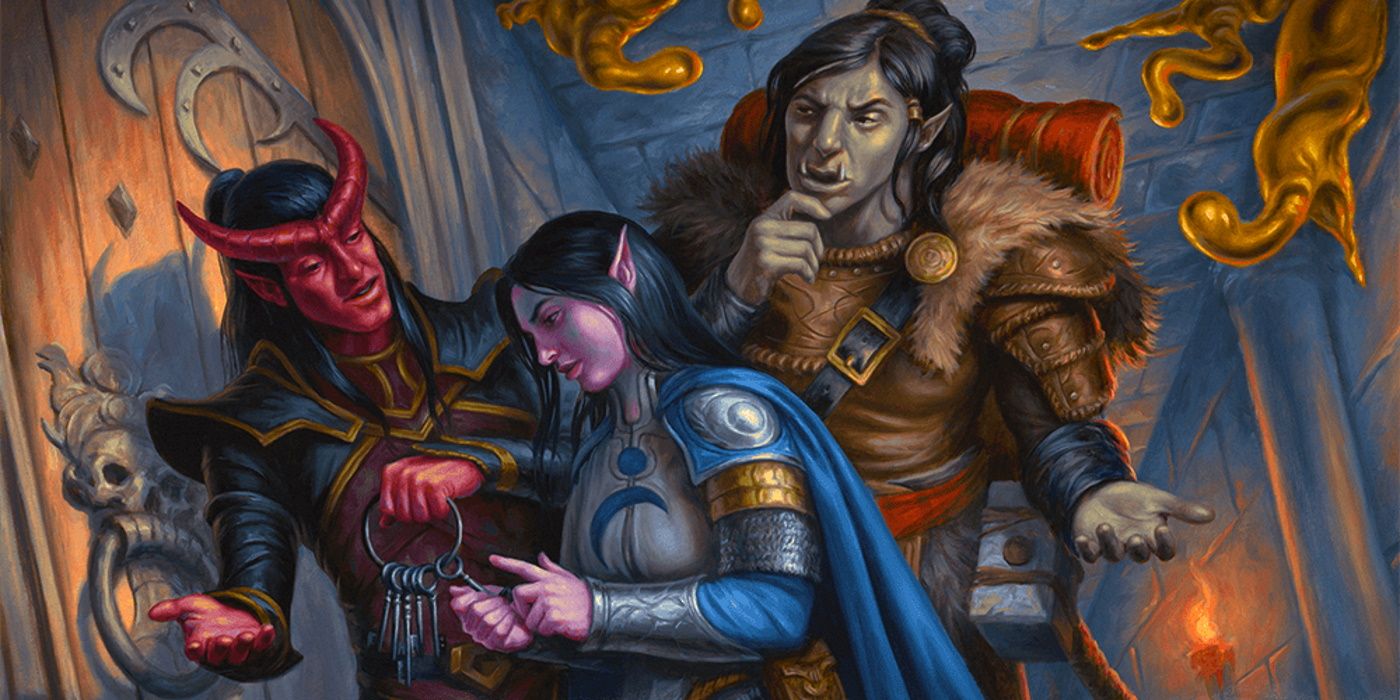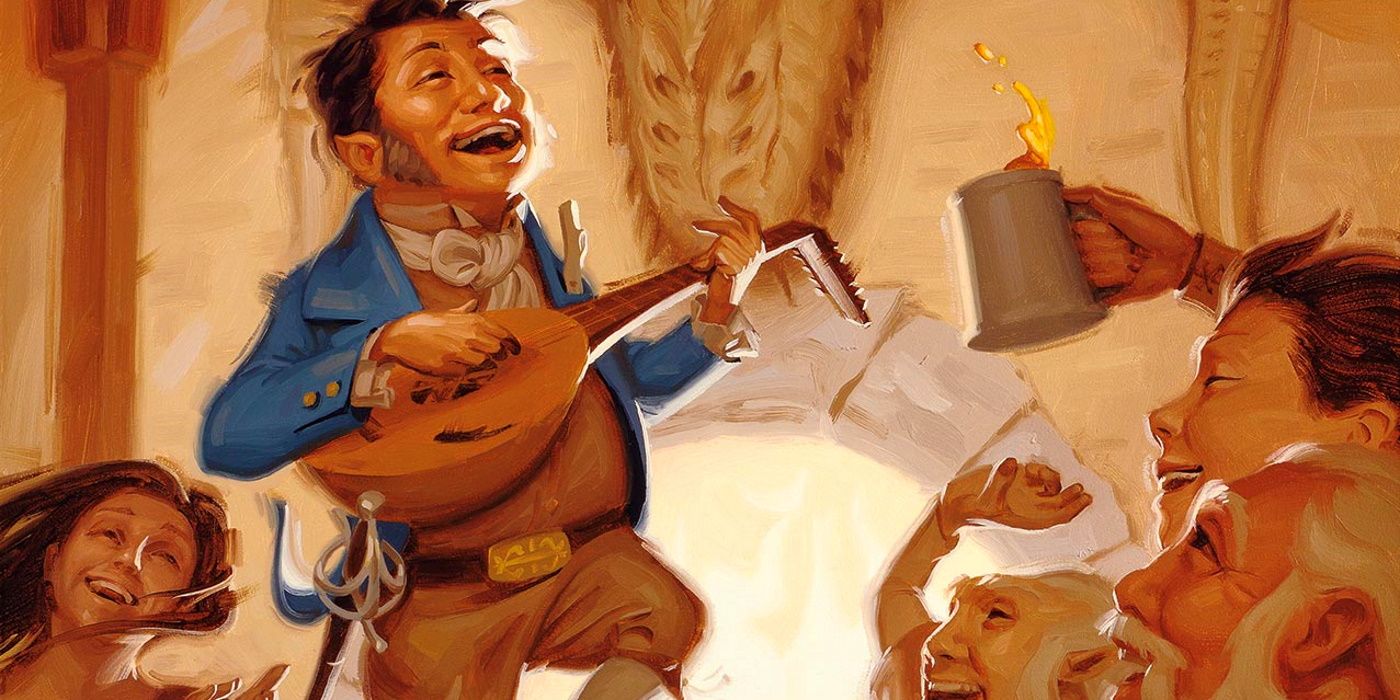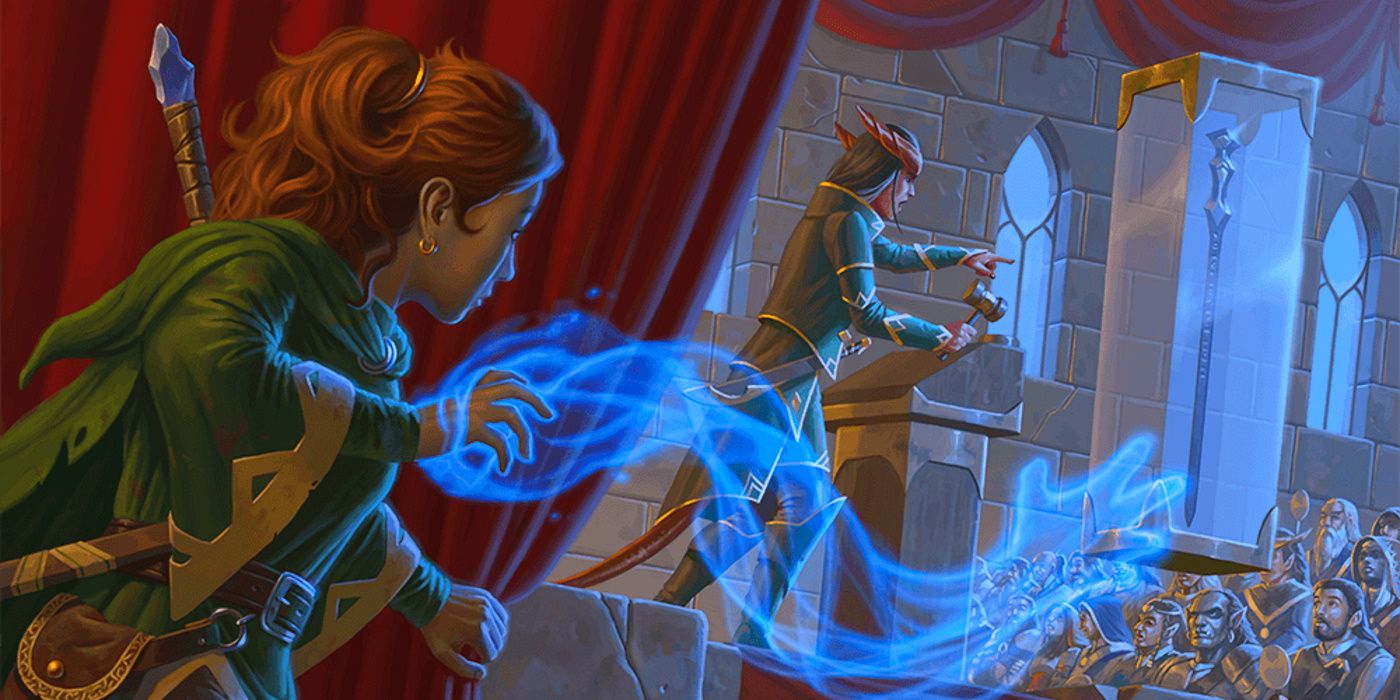Every Dungeons & Dragons campaign needs a little downtime to break up the action. With so much of DnD focused on combat and encounters, it’s always nice for players to take a little time and unwind. DnD is a character-driven narrative at its core, and downtime can be excellent for roleplaying and helping players get invested in their characters and the world around them.
Downtime is when players can rest, recuperate and spend time working on tasks in preparation for the next leg of their adventure. Downtime can last anywhere from a few days to months or even years. The break acts as a good breather for DMs preparing the rest of their DnD campaign but also is an excellent opportunity for players to pursue side interests that can help them become further invested in the campaign world. The Player’s Handbook, Dungeon Master’s Guide, and Xanathar’s Guide To Everything offer DMs suggestions for downtime activities. Within the books, DMs can find guidelines to help cover many activities players might want to do during these periods.
D&D Sourcebooks Have Good Examples For Player Downtime
The Player’s Handbook is often the first stop for DnD players when wanting to find the rules about a particular topic. Chapter eight has the section Between Adventures, which gives some examples of downtime activities. However, with only five examples listed, players might struggle to find something that their character might want to do.
One example allows DMs to skip the exciting DnD shopping session by having players craft equipment. Crafting allows players to craft a non-magical item so long as they are proficient in the tools required. A player with smith’s tools could start making themselves a new set of armor, or if they have painter’s supplies, a player might want to explore their character’s creative side. In crafting, players can express their characters’ personalities, enabling them to show things such as if they are more practical or artistic.
Another example in the Player’s Handbook is recuperating, where characters are able to recover from more serious injuries or diseases. This would, of course, depend on the individual campaign being run, as not all DMs implement injuries or sickness. However, if a DM plans to start a new DnD campaign that makes use of the injury table found in the Dungeon Master’s Guide, then recuperation during downtime could become a vital part of that campaign.
The Dungeon Master’s Guide provides more examples of downtime as well as a small section to guide DMs on how to create their own downtime activities. These examples are a little more in depth, with some including tables for the DM to roll on for outcomes. Some also pair with the examples in the Player’s Handbook, such as training with the Dungeon Master’s Guide providing more details on the cost and training times.
One of the more interesting DnD downtime activities is found in the Dungeon Master’s Guide, where DMs are encouraged to motivate players to build a stronghold or base for their party. For the players, having a home within the campaign world can mean more than simply a place to store all the loot they’ve gathered. Players can use it to create real ties to in-game communities, along with it serving as a central location to gather allies when they inevitably have to defeat the BBEG.
Xanathar’s Guide to Everything expanded on downtime by providing a more extensive list of options and tables of possible complications that can arise from certain activities. These complications make the examples in Xanathar’s Guide extra helpful, as they provide a framework for DMs to build on when creating their own. Allowing players to spend time with their favorite chaotic NPC of the DnD campaign is fun, but accidentally marrying into a noble family after a night on the town will make for some much richer roleplay.
Downtime Can Enrich The D&D Campaign Setting
The examples for downtime given in the three sourcebooks are good, but they are best when used as guides. YouTuber SupergeekMike recently touched on player downtime as part of his Critical Role Demystified series. In his video, he talks about the Vox Machina campaign of Critical Role and how the downtime choices from the cast are chosen based on cues from loose plot threads. He advises that DMs use the lists in the sourcebooks as guides or suggestions but allow the players to use personal motivations to inspire their downtime activities.
Having downtime activities be inspired by what players already want to do is a good indicator of how invested they are in the unique DnD campaign setting. If players are invested in their characters and the world, they will already have ideas of what they want to do and accomplish. It is also a great way to learn more about the characters and their priorities.
DMs can use the rules as a framework and adjust them according to what the players want to do. The rules should be seen as a starting point and can help if players need help coming up with ideas of their own. The lists in the sourcebooks can help give players examples to inspire their ideas that are then based on personal motivations.
DMs need to plan when and where downtime will occur during their campaigns and how long it will last. A few days off can provide a breather between battles, whereas longer breaks can act as chapters of the overall story. DMs can use downtime as a narrative trick in DnD to break up story arcs allowing a more seamless transition between parts of a campaign while also allowing the player characters to prepare for what’s coming next.
Downtime can also help with issues with some players who have been more used to playing video games. Video game protagonist syndrome or video game character syndrome refers to a certain mentality that some DnD players can adopt. In video games, players often go from everyday people to heroes of the world in a very short time. Using downtime in DnD can combat this by breaking up the adventures with regular activities, such as taking the time to build a base or researching a mysterious or weird DnD monster they’ve seen.
The real trick is not to treat downtime in DnD like a minigame and to use it as part of the campaign from the beginning. If players are invested in the campaign setting, then things that happen during downtime can go on to influence the plot of the campaign. A helpful way to think of downtime for some players can be personal side quests, focusing on individual goals, narrative, and character growth.
Downtime enables DnD players to experience the campaign setting outside of combat and adventure, creating a more intimate relationship between them and the world. It makes the world feel more real for them as they experience it essentially as a normal person would. When used properly, downtime in Dungeons & Dragons adds tremendous value to the world of the players.
Source: SupergeekMike/YouTube



